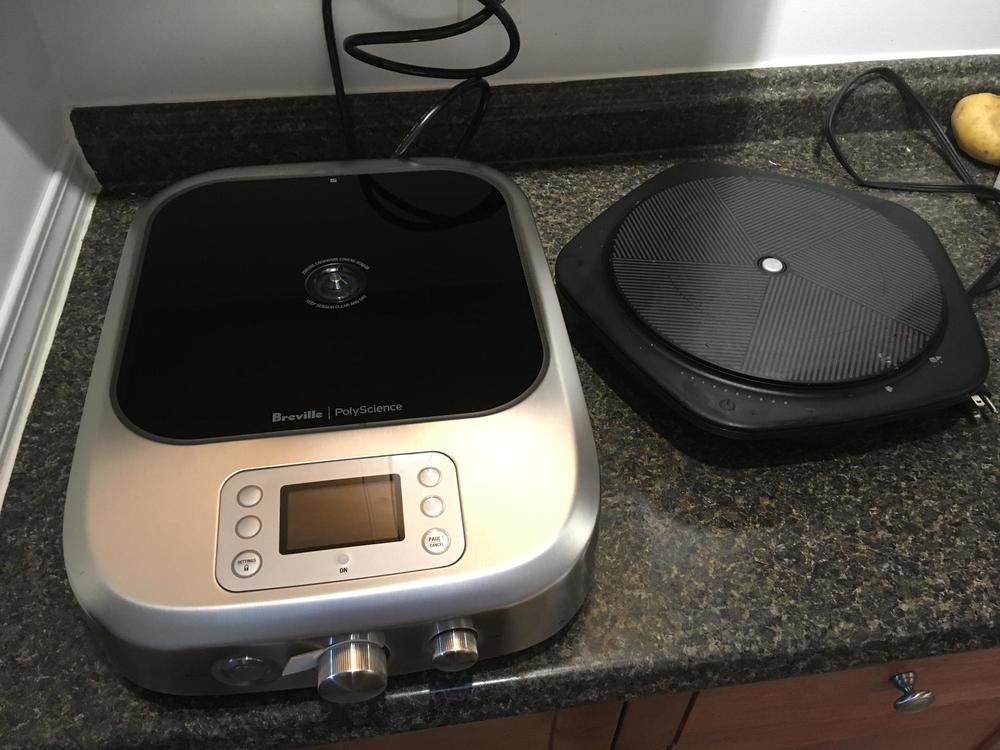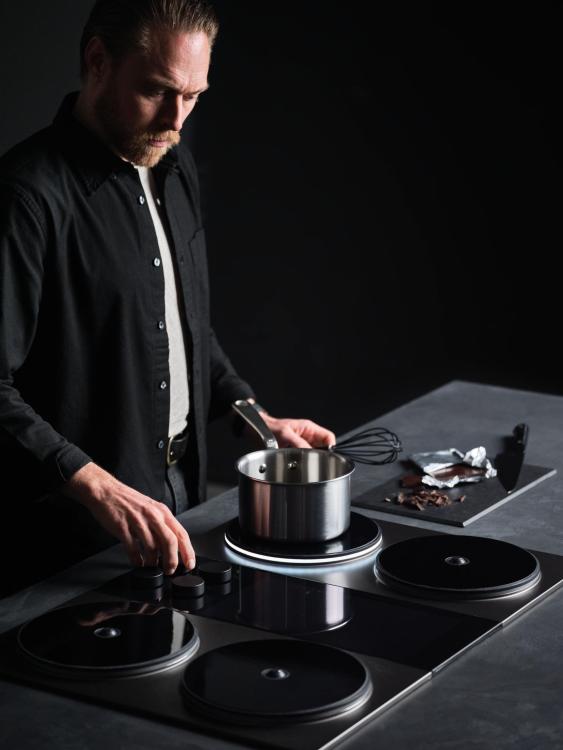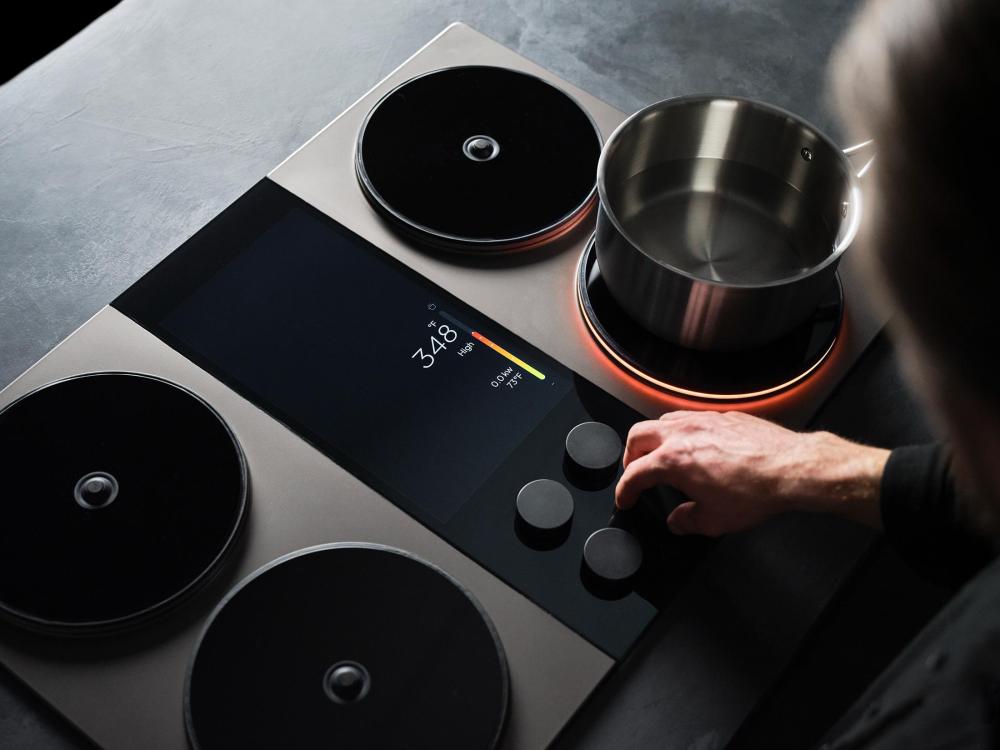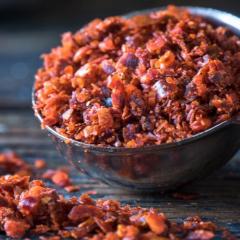Search the Community
Showing results for 'Breville control freak'.
-
*** Update July 2019: *** I've now owned the Breville PolyScience Control Freak for a year. I've written a review on it for my developing website. It's essentially a summary of what I posted in this thread. If you are interested, you can read it here: https://sizzleandsear.com/equipment-reviews/review-breville-polyscience-control-freak-induction-cooker/ *** Update March 2019: *** Temperature and Time Database (work in progress): https://sizzleandsear.com/precisioncooking/ As I mentioned in the Breville Smart Oven Air thread, I'm currently living in a basement suite without much of a kitchen, and it looks like I will be here for another year. This was getting me down, so when I spotted a Breville/Polyscience Control Freak on eBay that was soliciting "offers", I made a ridiculously low ball offer. To my surprise the seller came back with a counter offer of just $175 more... I pushed my luck and made another counter offer for $75 less... and what do you know, it was accepted! I've been eyeing this for a long time, but the $1800 price tag as always been a deterrent... until now Winning this item is what inspired me to cash in my Airmiles for the Breville Smart Oven Air. I figured that while I don't have a "real kitchen", the oven + the control freak would be the best kitchenette ever Just got the unit in the mail so I haven't had a lot of time to test it out. But so far I'm happy. It was a "demo unit" for a butcher/kitchen supply shop, but was you can see, the cardboard is still around one of the knobs, so I don't think it was ever plugged in. I put it next to the Tasty One Top for size comparison. I bought that last year thinking it would a good cheap man's Control Freak.... it looks so sad and pathetic next to the Control Freak . The Control Freak is seriously a beast! It takes up more counter space than any induction unit I've seen, but it seems to be built solid. And the carrying case is also very solid! Not a caterer, so I'm not sure how much I will be travelling with it. But might come in use for small trips. I haven't tested the probe yet. But I did pan control to 135F. The cooktop reading hovers between 134 and 135. I left my infared temperature probe at home, so can't measure pan temperature... but as you can see the water in the pan matches the pan read out! I also notice that it's not clicking on and off like the One Top... it's more subtle in its power changes. Also there are very fine bubbles at the bottom of the pot, and they encircle the entire diameter of the pot... doesn't look like a huge hotspot like on the One Top! I'm going to be playing with this over the next couple days, so if anyone has any questions feel free to ask them. I know there aren't a lot of these around, and it's hard to find answers on them.
- 947 replies
-
- 12
-

-
Have you looked at the Breville Control Freak?
-
You may be interested in this. https://forums.egullet.org/search/?q=Breville control freak&quick=1
-
Not sure how to do the quotes: But the TheAvidHomeChef said earlier : ____________________ there's a new built-in cooktop called the Impulse Cooktop. It came out earlier this year back in Jan. It's got a battery that boosts your US 110v outlets(normally 1800w) to output 10kwh, which translates to boiling 1 liter of water in 40s. That's incredible fast. And it has the same precision temp control and exposed sensor like the Breville. And the installation is easy as you don't need to pay an electrician to come install a 240v outlet. Because it can be plug into your existing 110v outlets. ___________________ Time will tell if this impulse cook up has the same rock, solid liability of the control freak but if so I think it’s a game changer. Our next kitchen reno was going to have a simple stainless steel shelf wide enough for three spaced out control freaks with electrical to match. Now I’m am not sure.
-
I did a simple test of browning where I made the meatball recipe that previously gave me browning trouble. It has 2 lbs ground meat and 2 cups of water, so the high moisture content makes browning a challenge. Previously it would not brown well in the Proline. I tested it on the Control Freak where I preheated to 400 using the Breville Thermal Pro 12.5" skillet, a Le Creuset cast iron 12 inch pan, and a Falk Copper Coeur 9.4" pan. The Breville browned very effectively and rapidly and produced a good crust on the meatballs. The cast iron dropped in temperature and stayed cold and while it did brown, it took much longer, and the crust was thinner. Furthermore, it didn't cook well around the outside part of the pan whereas the Breville cooked well over its whole surface. The Falk pan also seemed to lose temperature rapidly and it took longer to brown, but it did recover and produced a nice crust eventually. (I realized belatedly that I should have tested the proline, not the falk, but too late to change that.) Based on my observations I don't see that cast iron is a good choice for induction.
-
Haven't been on here for a minute. 2024 should really be called the YEAR of precision cooktops. The Breville Control Freak home is a total surprise! I really want to get it but it's too bad the price is basically the same as the my legacy CF. Actually just $100 more expensive than legacy CF which I got on Christmas sale. I know Chefsteps has a discounted price of $999 with subscription. But i'm on the fence.. Because there's a new built-in cooktop called the Impulse Cooktop. It came out earlier this year back in Jan. It's got a battery that boosts your US 110v outlets(normally 1800w) to output 10kwh, which translates to boiling 1 liter of water in 40s. That's incredible fast. And it has the same precision temp control and exposed sensor like the Breville. And the installation is easy as you don't need to pay an electrician to come install a 240v outlet. Because it can be plug into your existing 110v outlets. Well...maybe I'm wrong. I still need somebody to make a cutout in my counter to fit this. So not exactly plug and play.😅 Not gonna lie, this Impulse cooktop does look good!
-
The Control Freak Home manual is now available! https://assets.breville.com/BMC800/BMC800_USCM_IB_J24_LR.pdf Of note, the manual says that we can "create multi-step preset to playback automatically". Oh yes. Yes, yes, yes. For reference, here is the manual for the commercial Control Freak. https://www.breville.com/content/dam/breville/us/assets/miscellaneous/instruction-manual/commercial/CMC850-instruction-manual.pdf
-
Do you think they are support for the Control Freak or support for the web site for their subscription and such? The product is sold by Breville and their support sucks. I've been trying to get answers from them for a couple weeks at this point about recommended pans and allowable pan concavity as I grow increasingly suspicious that there is no such thing as a flat pan.
-
Just as a side note to this conversation, some induction cooktops do output a constant amount of power for a given setting. For instance, my Vollrath HPI4 series ~3600 watt induction cooktop scales its wattage output to the % output I specify (0-100%) on the dial. I have not checked to make sure it does not vary over time, but in my tests so far it has seemed very locked-on. Of course it may dial the heat back if it detects a severe overheat or danger condition, etc. -- but if one is looking for constant power output there is probably an induction cooktop which doesn't "cycle" out there for them. I personally use my Control Freaks for almost all my cooking and the low/medium/fast intensity setting has been enough for 99%-100% of my cooking needs. But it would be really cool if Breville changed the induction drive circuitry to dial in a specific wattage output to try to maintain temperature instead of cycling a bit. I only notice the cycling in certain circumstances and only with highly-conductive pans, and I can't remember the last time it actually affected my cooking, but it is there. Breville, if you're listening, it would also be awesome to dial the intensity from 0-100% instead of low/medium/fast on the Control Freak. If that intensity worked like the Vollrath HPI4-series as well, that would be a pretty killer combination.
-
That's true, but the Bellman 50SS is not technically compatible with the Breville Control Freak. If you look at the Control Freak, you'll see that there's a spring-loaded temperature sensor right in the middle of the induction coil, and that is depressed when a pan is placed on it. There's a small ring around that center bit which is supposed to be completely covered with the flat bottom of a pan, and this particular induction hob can sense if it's not. If you look at the bottom of the Bellman 50SS, it unfortunately does not have a flat bottom (you can see briefly in this video if you pause it at 3:57): Initially when I tried using my Bellman on my CF, it didn't work at all. The unit just complains that you need to have something on the temperature sensor if you don't have it perfectly centered. I found that if you do make sure it's centered so the nut and thread pushes down the sensor, the CF will give you a warning, but you can click through the warning and it works great.
-
This article from allrecipes.com came through my newsfeed this morning: Cook Anywhere You Want With the Best Portable Induction Cooktops It seems to be a pretty nice rundown of portable induction cooktops that are currently available at relatively low cost. (They mention the Breville Control Freak as the ne plus ultra, but exclude it from these reviews due to its price.) Here's the curious thing about the review, though: in every case they complain that they couldn't get water to boil at 212F; it sat at a rolling boil at around 210F. I wanted to shake them, or at least write and ask about their methods. What elevation were they at? At what depth did they measure the temperature in that pot of water? (I assume it was for the pot of pasta water they were boiling.) Did they try it with lid on and off? So, my questions: 1. Is anyone here a member of allrecipes.com with the inclination to write and ask them about their methodology? 2. Does anyone here feel like testing their induction cooktop's water-boiling ability to see what temperature it reaches? 3. They imply that the water temperature would be more critical in a restaurant. I think basic physics stands in their way. Am I missing something?
-
I tested a couple more pans for temperature uniformity using the Control Freak induction cooker. One is a Paderno Grand Gourmet 28cm (11 inch) fry pan. This pan has a thick aluminum base which the manufacturer told me is 6mm of aluminum. (Apparently in the past it was 7mm.) It has 1mm total of stainless steel in the base. The base is a bit over 8.75" diameter. I measured the thickness of the base and found it to be 7mm total. The side of the aluminum on this disk is exposed for those that worry about that sort of thing. Also this is obviously not flat: it rocks quite a bit on its base, so not the best quality either in design or manufacture. In my testing with the Control Freak set to 250 on low intensity, the pan heated to 259 in the center and stayed at that temperature. At 2" from the center it was 257 and at the edge it was 242. (I didn't test the side wall.) The other pan I tested is a Breville Thermal Pro frying pan. The pan is 12.5" diameter. This pan has has tri-ply clad sides with an aluminum base bonded to the bottom. The aluminum disk is covered by stainless steel and its bottom is about 8.5" diameter. I couldn't find advertised thickness data. I found the total thickness of the pan bottom to be 7.3 mm (presumably including 3 layers of staniless and 2 layers of aluminum). Pan sides are quite thin, maybe 2mm. This line is discontinued and the pans are cheap on amazon at the moment. The base of this pan is quite significantly concave. This pan heated to 254 in the center, 258 at 2" and 248 near the edge. The sidewall temperature was 215. One thing I've been wondering about is what makes cast iron good and can a pan with better heating uniformity deliver the same benefits. It seems like people are excited by the searing power of cast iron. I've seen cast iron work better for browning wet meatballs than my demeyere proline skillet. (They browned in cast iron; they did not brown in demeyere.) So what makes cast iron work better? Presumably it's the thermal mass. So what does that actually mean? It seems that the number of most interest is the volumetric heat capacity. Cast iron 3.6 J/K cm^3 Aluminum 2.4 J/K cm^3 Copper 3.4 J/K cm^3 Stainless 3.8 J/K cm^3 (depending on alloy) My cast iron is 5mm thick, so its total areal heat capacity would be 5*3.6=18 J/K cm^2. Falk Coeur has 1.9mm copper and 0.6 mm stainless, so 1.9*3.4+0.6*3.8 = 8.74 J/K cm^2. So I predict that the Falk holds a lot less heat than the cast iron. What about Demeyere proline? Reportedly it is 3.7mm aluminum a 1mm stainless. So that gives 12.68 J/K cm^2. So better than falk but not as good as cast iron. I'll pause here to note the weight issue. Of these materials, aluminum actually has by far the best heat capacity by mass at 0.9 J/g K compared to 0.46 J/g K for cast iron and 0.39 J/g K for copper. This means we can get much more heat into less weight if we use aluminum. That is, to match the 18 J/K cm^2 of 5mm of cast iron we need only 7.5mm of aluminum, and the weight of the aluminum is 50% that if the iron. So that would suggest you could get the same searing capability as cast iron from a much lighter weight pan. Considering Paderno, at 6mm aluminum and 1mm stainless it's areal heat capacity is 18.2 J/K cm^2, which suggests it should perform similarly to cast iron. I don't have data on composition for the Breville, but it's base is 0.3mm thicker and it seems likely it has more stainless steel, so its score will be similarly high. I haven't managed to find a way to clearly test searing or heat holding power of the pans, however, to make a comparison between the cast iron and the aluminum disk pans. Does anybody have any thoughts on a way to test this? And have I overlooked anything? Aluminum has higher thermal diffusivity which suggests heat should move out of it into food faster than from cast iron. That would be good, right? By the numbers, copper seems to offer remarkable little gain for all the hype associated with it as the best pan material. Its thermal diffusivity is 111 mm^2/s compared to 97 mm^2/s for aluminum. Seems like barely a difference and Regarding other notable pan options, there is Volrath Centurion which has a 5mm core of aluminum and 1.9mm total of stainless steel (19.22 J/K cm^3). There is (maybe) Cristel Casteline (which has vanished from the Cristel web site) which has (had?) a similar construction to the discontinued Breville line but a very high price tag and an interchangeable handle system whose usability isn't clear. Scanpan Impact has a total base thickness of 6.4 mm.
-
Helping a friend research a cookware purchase, I ran across All-Clad's G5 graphite core cookware. All-Clad says this new tech is induction-compatible, and of course it is because it's clad with stainless. But the question is, if used on an induction hob, what is actually heating? Is the entire pan heating from direct effects of induction, or is it like the Copper Core line, where the induction heats the stainless cladding only and the heat diffuses into the aluminum and copper layers? The reason I ask is that I own a Breville Control Freak, and it's recommended to not use high power on layered pans that don't heat all the way through. Over time, this can cause the layers to separate because of the expansion of the different layers while heating (particularly relevant to enameled cast iron). I've googled a bit and gotten conflicting answers. It seems that some non-ferrous materials do heat under induction, and some sources say graphite is one of those materials. Other sources imply that only some graphite heats under induction, which doesn't make sense to me, but I can't tell if that's because the site is wrong or there are different forms of graphite with different properties, or what. (I've thought about contacting All-Clad, but I'll be shocked if they are willing to give any more detail than, "G5 is induction compatible, like the literature says.") Thanks!
-
Very cool. $200 cheaper (plus an extra $300 off, for a limited quantity, for $69/yr. ChefSteps subscribers). US-only, 1800W-only, for now. It looks like it's not a "washdown-style" unit like the regular commercial units, but most homes aren't looking for that high of a level of water resistance. Breville slimmed down the machine a bit to make it more manageable in homes, without reducing the coil size or residential cooling capacity. Commercial kitchens and residences in very hot climates may still want the commercial version though, as it's designed for higher ambient temperatures. The touchscreen interface, the custom program creation, etc. are all nifty. I see that Breville removed the 6 screen-edge buttons and the time knob. I'm not sure that the time knob got used much, but I sure hope there's an easy way to use the knob to adjust heat intensity (i.e. not rely on the screen). That middle-right button is virtually the only button I ever use other than the power button. Here's the comparison chart: https://d3awvtnmmsvyot.cloudfront.net/api/file/jFOrapLTBOLzkuxAf65w I'm really tempted to pick one of these up. Even with a couple regular Control Freaks and one Control Freak home, it's usually easy to move a pan from one unit to another without losing the pan temperature or the current temperature setting--so it wouldn't be hard to integrate this into a daily cooking workflow at home.
-
I would love to see Breville make a 2400W (240V 10A) version for non-US/CA markets. However I'm guessing that they'll only be selling them in the US for a while for a few reasons (such as the U.S. probably being their biggest market by far for it, potential issues for residential support networks outside the U.S., etc.). Additionally, I'm not sure if the new slimmer model is designed to dissipate the kind of heat necessary for 2400W induction cooking. It might be. I really don't know. But I would not be surprised if they designed and optimized this model for the US/CA market with the idea of creating an "international" version later if the U.S. version sells well enough--and that may mean that the circuitry is not sized for 2400W. I'm planning to get one of the new Control Freak Home units. Right now though I'm mostly looking forward to seeing the reviews. The automated programs in particular are the part that's most interesting to me--especially if it's possible to input multi-step custom programs. I'm also hoping that they post a manual sometime soon. I looked on Chefsteps.com, but I couldn't find one.
-
I just saw this, and thought some folks here might find it interesting. I don't know if they're licensing Breville's patents or if the cooktop will even ship, but it's definitely something interesting. All four burners are supposed to have large pan-contact temperature sensors, and the UI touchscreen down the center seems to be able to specify set temperature (and maybe also power temperature). I'm not quite sure on all the details. Website (product page): https://www.impulselabs.com/ Since most 50A 120V (US) kitchen outlets are somewhat limited in their power output, the cooktop has a 3 kWh battery inside it...so that it can boost energy for short periods of time, for getting water to a boil quickly or for searing. It's not inexpensive, roughly the same as four Control Freaks. I wonder how large the coils are underneath those oversized glass-like burner covers.
-
Sorry, I made a typo (or egregious grammar error) in my original post. In the US, most kitchens are either wired with a single 50A 240V outlet (12000 watt on the nameplate, 9600 watts after the necessary 20% de-rating for continuous usage) plus one or more 120V 15/20A circuits...or they are just wired with lower-wattage (often 120V 20A) outlets. The 50A 240V outlet is usually shared by the oven and stove cooktop, and the reason it's often missing (especially in homes built decades ago) is because the assumption was that gas stoves don't need a big electrical outlet. Contractors tend to omit circuits they don't have to install, to save money (or increase profits). If there's a 50A 240V outlet that is not also shared with an oven, it could provide 2400 watts continuously to four induction burners (or focus a lot more power into a smaller number of burners). But when one is trying to boil water, warm up a pan, and warm up the oven all at the same time...that 9600 watts of power can quickly look inadequate. Putting a battery underneath a cooktop is a really interesting idea because it could make things feel more instantaneous for induction cooktops, similar to what people are used to with methane. That said, putting a battery indoors and near heating elements is certainly an engineering challenge. I prefer to keep my batteries far away from heat sources. Especially if they're combustible. The whole bidirectional inverter talk in that video above, by the way, is also curious. I'm not sure how much help 3 kWh of power is going to be to support the grid outside of very short outages. A typically home battery is 4 to 5 times that large, and typically the current one can pull from a battery at any given time is relatively proportional to the capacity of the battery. So that all seems more like marketing than a killer use case. In any case, I would love to see Breville build a cooktop like this (even without the battery feature). If we're lucky, they're already working on one. I will gladly buy one, especially if one or more burners are larger and can go up to 2400 watts like the EU/ANZ Control Freaks--or in my wilder dreams 3600+ watts--for quicker boiling of water, aggressive searing, etc. And if it's Impulse Labs that does it first, well, hopefully they plan to stick around for a very long time so I can justify buying one.
-
It's hilarious that my first question when I got the Control Freak was, "how do I just boil water?" Thank you for the links and advice. And for compiling that list of temps, @CanadianHomeChef In my bookmarks I also found this list of temperatures, which perhaps came from earlier in this thread. https://docs.google.com/spreadsheets/d/1azCSYUU4I25VbHfaPnhOvF_fHplbhMvy/edit#gid=1369374172 (And that list references this cool Breville infographic and some other sources. Thanks, whoever made this!) I have only used my CF a few times now, for boring things like ramen and making quesadillas, but I can already see how thinking in terms of temperature and not power is going to be so cool. Now I have to scan the thread for cookware recommendations, as the only induction pans I have are mediocre. Edit to add: I reformatted the official Breville temperature chart to be easily printable on a portrait page, at maximum size. This did require removing the header and branding (forgive me, Breville). It's attached. Breville Control Freak temperature chart official (resized for printing).pdf
-

Single burner induction cooktop with easy temperature adjustment?
blue_dolphin replied to a topic in Kitchen Consumer
Perhaps this: Breville Control Freak -

Single burner induction cooktop with easy temperature adjustment?
btbyrd replied to a topic in Kitchen Consumer
I will say that one of my favorite capabilities of the Mirage Pro is in making slow-cooked scrambled eggs. Heston Blumenthal has a great method for making rich, custardy scrambled eggs using a double boiler. They take forever, but they're delicious. Because it's sort of fussy to break out a double boiler for breakfast, I've approximated them in the past, not using a double boiler, by taking a pan on and off the heat to manually regulate the temperature, ensuring that the eggs don't overcook and that I avoid the formation of large "curds." With the Mirage, I'm able to set the temperature of the pan in 5 degree (C) increments, so I'm able to make this style of egg without either using a double boiler or babysitting the pan to maintain temperature control. I simply set the temperature for 65C - an ideal egg-cooking temperature - and let the pan warm up with butter while I crack the eggs and get to work on the rest of breakfast. When the pan is up to temp, I can just add the eggs and not have to worry about them overcooking if I forget to stir for a few minutes. In the event that I have to walk away, I turn the temp down to 60 or 55, and they stay hot without continuing to appreciably thicken and cook. If I'm getting closer to breakfast and want to rush things along, I can turn up the temperature to 70C and finish up relatively quickly. To overstate things, this has revolutionized the way I make scrambled eggs on lazy weekend mornings. I will say that this technique, and (apparently) the temperature control generally, doesn't work well at all if you're using light weight pans. I cook mostly with relatively heavy carbon steel, cast iron, or All Clad stainless pans, and none of them have given me issues with the Mirage. However, the one time I tried to make this recipe with a much thinner non-stick pan from T-Fal that was a top choice from Cook's Illustrated and ATK. Since induction heats the pan and not the burner, and since thermostatic temperature control on induction units registers the heat of the ceramic material on top of the "burner" rather than the actual temperature of the pan, that particular nonstick pan overheated before the relatively low temperature of 65C was registered by the cooktop. When I added butter to the pan, it rapidly foamed and started to burn because the pan was much hotter than the thermostat realized. I have since decided that non-stick pans are basically worthless compared to the alternatives, so this isn't an issue for me anymore. I think this would have been an issue on every other induction burner, so that's something to think about when using thinner, less massive, non-stick pans with induction -- even if they're "induction ready." In you want to use a pan like that, just go by power settings rather than trying to use temperature control. But with pans of moderate weight, the temp control is very nice on the Mirage. It's nowhere as extreme as the Breville Control Freak, but it's insanely better than the cheaper units. -
I'm sure there are. I'm just saying that if you have a well regulated environment controlled by a PID, having an additional widget measure ambient temperature isn't going to tell you anything new. It'd be like having an extra thermometer reading the temperature of a sous vide bath when there's already a thermometer measuring that temperature in the circulator. The Breville ovens have excellent temperature control. If I set them to 350F, I don't know that I'd want or need an additional gizmo to tell me that the oven is set to 350F. Maybe some people would find that information worth paying for, but a smart thermometer is of diminished utility in a smart oven (or on a Control Freak, or for use with a circulator). Pellet grills are larger and more prone to having hotter and colder zones, so that's kind of a different ballgame. But I take your point... different strokes for different folks. If people have the Joule Oven and also have a Combustion probe, it'd be cool to use them together. But I think the number of people who would buy Chris Young's thermometer just to use with the Joule Oven is quite small.
-
Hello from sunny Bay Area, Calif. My favorite tool is Myrtle, our Wolf 24” built-in steam oven that we have been enjoying for over 5 years. I use it for baking our breads and for reheating, mostly. Next fave is our Wolf range. Both are expected to drop down a peg in the favorites list, as our Breville-PolyScience Control Freak is due to arrive in under a week. It has taken me just over a year to take the plunge and place an order with PolyScience, getting the ChefSteps discounted price. I hope to have burnt my last caramel sauce! I found eGullet by googling the Control Freak. Thank you for the information in that thread. And thank you for your forum.
-
I am a happy Chefsteps subscriber. I joined up with the Premium before Joule ever existed. That Chefsteps was a lot molecular gastronomy and early sous vide. I adopted the sous vide, avoided the "spherifications and centrifugy" stuff. But it was a better food entertainment than any dedicated cable cooking channel. And the content is on-demand, I can rewatch it as much as I like. When they emerged from their hiatus, I decided to up to the Studio Pass also. I like it, they are not so lab equipment focused, much more accessible for me. I am actually trying more of the new recipes/techniques than I did with the legacy recipes (BB, Before Breville). To each their own. I don't pay for any cable anything, so my food video subscription $$ go right to the source of creation. As for the Breville stuff being mediocre (?), isn't the Breville Control Freak considered a cutting edge induction hob? The users here on EG who have it really seemed to like it.









